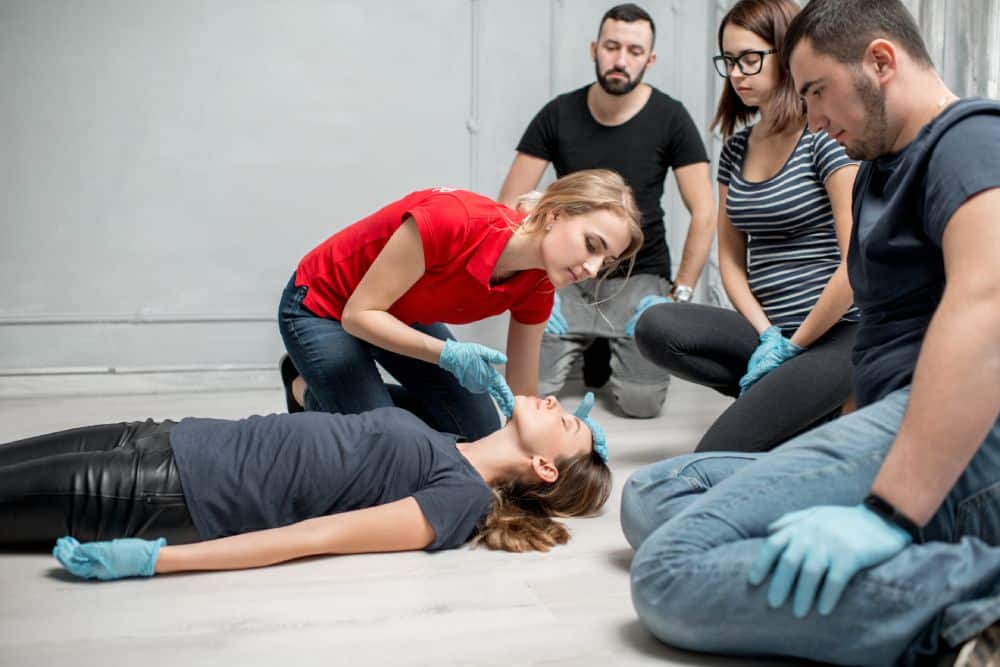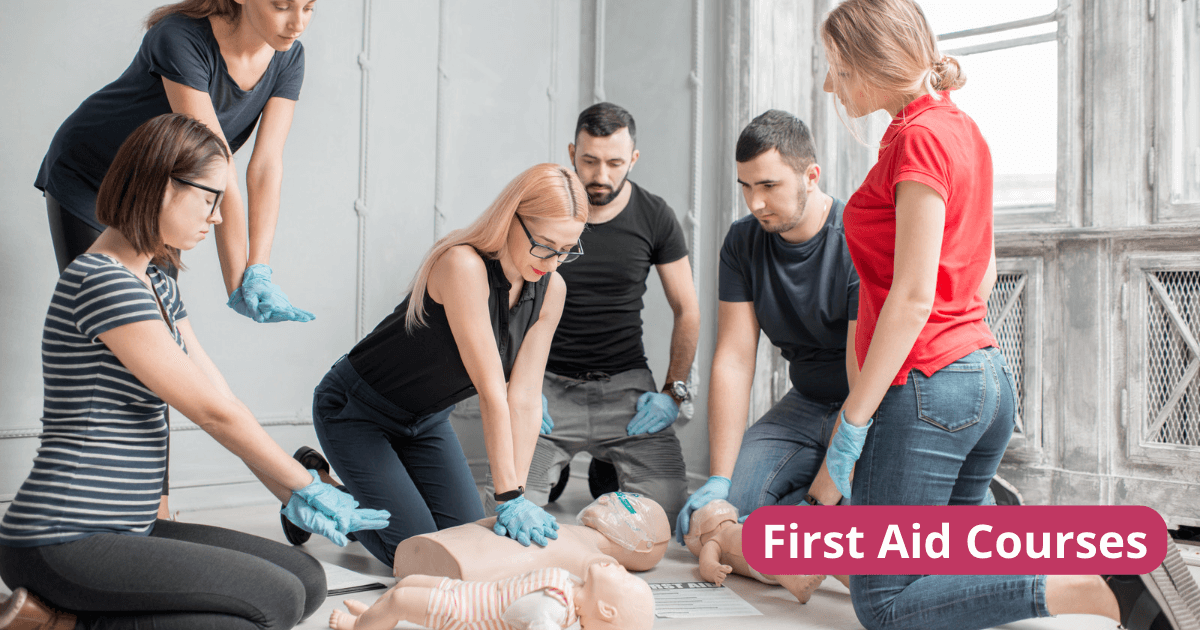Introduction
In a world where accidents can occur at any moment, knowing exactly how to react efficiently can be the difference between life and fatality. Cardiopulmonary resuscitation (CPR) is a vital skill that everybody should consider learning. Yet with many options available, browsing the globe of CPR training courses can really feel overwhelming. So, which one is best for you? This post aims to guide you with the different mouth-to-mouth resuscitation courses offered, helping you pick the very best fit for your needs.
Understanding CPR and Its Importance
What is CPR?
Cardiopulmonary resuscitation (CPR) is an emergency procedure carried out on individuals whose heart has actually stopped defeating or who have actually ceased breathing. It involves chest compressions and rescue breaths to maintain blood flow and oxygenation until advanced clinical help gets here.
Why is CPR Important?
The significance of mouth-to-mouth resuscitation can not be overemphasized. Statistics reveal that immediate CPR can increase or perhaps triple a victim's possibilities of survival after heart attack. Understanding mouth-to-mouth resuscitation not only outfits you with the skills to conserve lives but additionally increases your self-confidence in emergency situations.
When Must You Use CPR?
CPR needs to be initiated when an individual is less competent, not taking a breath generally, or showing indicators of serious distress. Being able to identify these conditions swiftly can save priceless minutes.
Navigating the Globe of CPR Courses: Kinds Available
Basic Life Support (BLS) Courses
What is BLS?
BLS courses are designed for healthcare providers and specialists that require to preserve qualification in basic life assistance techniques. These courses cover important abilities such as high-grade upper body compressions, airway administration, and using an Automated External Defibrillator (AED).
Who Should Take BLS Courses?
If you're a healthcare employee, caregiver, or a person looking to boost their clinical knowledge, a BLS training course might be suitable for you.
Heartsaver ® CPR/AED Courses
What are Heartsaver ® Courses?
The Heartsaver ® program uses programs customized for laymans. It concentrates on grownup, youngster, and infant CPR methods in addition to AED usage.
Who Ought to Think about Heartsaver ® Courses?
These programs are best for teachers, instructors, parents, and anybody responsible for others' security that might need to act in an emergency situation.
First Help Course vs. First Aid and Mouth-to-mouth Resuscitation Course
What Does a First Aid Course Cover?
An emergency treatment course usually covers the fundamentals of treating injuries such as cuts, First Aid Course Adelaide burns, fractures, and choking occurrences without concentrating on resuscitation methods.
Why Incorporate Emergency treatment with Mouth-to-mouth Resuscitation Training?
Combining first aid training with a CPR program furnishes you with detailed emergency action abilities. By recognizing both first aid and resuscitation methods, you'll be better prepared to deal with various emergencies.
Advanced Cardiac Life Support (ACLS)
What is ACLS Training?
ACLS training surpasses basic life assistance by including advanced medical skills like providing medicines and taking care of breathing failure.
Who Requirements ACLS Certification?
ACLS accreditation is typically required for medical care experts working in critical treatment setups such as medical facilities or emergency rooms.
Choosing the Right Training course for You: Variables to Consider
Your Degree of Experience
Before register in any type of training course, examine your current degree of expertise concerning first aid and CPR methods. Novices might take advantage of starter programs like Heartsaver ®, while knowledgeable individuals might go with even more extensive training like BLS or ACLS.
Your Responsibilities
Consider your role in your neighborhood or workplace. If you're responsible for others' safety and security-- like a train or teacher-- you might wish to spend time in thorough emergency treatment and CPR training.
Course Format: In-Person vs. Online Options
In-Person Training Advantages
- Hands-on experience Immediate comments from instructors Networking opportunities
Online Training Advantages
- Flexibility Convenience Often less costly
Understanding Certification: What You Required to Know
Duration of Certifications
Most qualifications last in between 2 to 3 years prior to requiring revival; nevertheless, this varies by organization.

Recognized Organizations Offering Certification
Several companies offer trustworthy accreditation programs:
- American Heart Organization (AHA) Red Cross National Safety Council (NSC)
Finding Quality Educating Providers
Researching Regional Options
Look right into local hospitals or community centers offering emergency treatment programs to find practical options near you.
Online Resources
Many companies supply online training modules that offer certification upon conclusion-- a superb alternative if time constraints are an issue.
Costs Related to Numerous Courses
|Course Type|Average Cost|| ---------------------|----------------|| Standard Life Support|$100 - $150|| Heartsaver ®|$50 - $80|| Emergency treatment Just|$60 - $100|| ACLS|$200 - $300|
How to Prepare for Your Course
Pre-Course Recommendations
Before participating in course:
Review any offered materials. Wear comfortable clothing. Bring any kind of essential products detailed by your instructor.What Takes place After Completion?
After successfully finishing your picked program:
You'll get an accreditation card. Keep it upgraded according to your provider's guidelines. Apply what you have actually found out regularly with practice sessions if possible!Common Mistaken beliefs Regarding Emergency treatment and CPR Training
Misconception 1: Only Medical Care Professionals Required This Training
This might not be better from the reality! Everybody can gain from recognizing exactly how to carry out first aid or perform CPR!
Misconception 2: I'll Never Have To Make Use Of It
Emergency situations develop suddenly; being prepared is always wise!
FAQs Regarding Emergency treatment Certificates & Courses
How long does it require to finish a typical first aid course? The majority of emergency treatment courses take about 4 hours but can differ depending upon material depth.
Will I receive a certificate after completing my course? Yes! Most trustworthy organizations give certificates upon successful completion.
How usually do I need to renew my certification? Commonly every 2 years; get in touch with your accrediting organization.

Can I take these training courses online? Definitely! Many companies offer on-line options enabling flexibility.

Are there age needs for taking these courses? Generally no age limitation exists; nevertheless, parental approval might be required under certain circumstances.
Do employers require workers to have these certifications? Several employers do favor team member trained in initial aid/CPR-- it shows commitment in the direction of workplace safety!
Conclusion: Your Journey Begins Now!
With so many choices available when it comes down choosing which program fits best-- whether it's Standard Life Support (BLS), Heartsaver ®, Advanced Cardiac Life Assistance (ACLS), or even just basic First Aid-- the key takeaway remains clear: Taking proactive actions in the direction of enhancing your data base around emergency treatment & & cardiopulmonary resuscitation will inevitably empower YOU! By spending time right into browsing the globe of mouth-to-mouth resuscitation programs sensibly today makes sure preparedness tomorrow-- because every 2nd matters during emergencies!